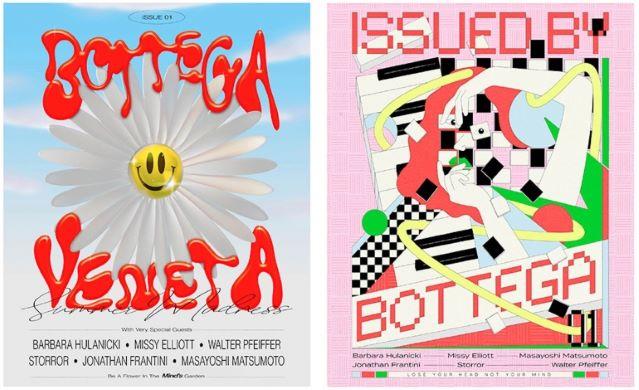
What future for storytelling?
After the era of "short news" and "snacking content", brands seem to want to share their identity through more detailed, more profound content, and above all on a medium they control, like Bottega Veneta and its innovative and disruptive marketing strategy. Between the risk of homogeneity and the desire to assert one's own values, we reflect on brand content 2.0.
The limits of a model
Need we remind you again? For several years, the brands have made digital their spearhead. The sharing of values, stories, democratization, and other digital interactions have replaced more traditional marketing. Reinforced by the health crisis, the exploration and exploitation of new digital territories to engage in dialogue and maintain a link have become essential.
Nurturing a community is the challenge. To do this, ever more immersive experiences are being created, between virtual reality, the use of Instagram and TikTok videos, even going so far as to create and sell purely digital accessories and products to dress avatars, as Gucci has done. The illustration of an industry that is still trying to seduce millenials and generation Z.
However, this model sometimes seems to run out of steam and this (frantic) race leads to an inevitable mimicry between brands, even if it means sometimes losing sight of the main issue: seduction.
Another parameter to take into account is content shock : content saturation. Users are faced with a massive and constant flow of information, increasingly solicited and engaged: difficult for brands to capture their attention. Losing the impact of their communication, luxury brands are fine-tuning their strategy to become more relevant. And this transition is already underway.
Back to the roots
It is not a question of creative "hibernation", but rather of a more progressive and thoughtful brand content.
Indeed, as Thibaut de La Rivière, Director of Sup de Luxe, points out: "For brands, it's a question of exploring a different rhythm, far from the imposed standards. The concept is to preserve their identity values, a certain exclusivity, and cultivate the idea of discreet luxury."
We will then talk about slow content, responding to the demand of a more alert and informed public. A perfect illustration of this transition, which does not sound like a revolution, but rather a necessary evolution, is the Milanese label Bottega Veneta.
Indeed, last January, the Italian brand took everyone by surprise by disappearing from social networks. Strange strategy at a time when social networks are all-powerful... Rumours were assuming a comeback with a big announcement, while others were talking about a pure marketing buzz.
But what if the reason was elsewhere? In a recent interview with The Guardian, Daniel Lee, the artistic director, accused social networks of "homogenising culture" and spoke of the need for a return to more targeted and confidential content. This has been achieved with the launch of the first all-digital quarterly magazine, soberly named "Issue 01". He hopes that readers will "sit down and watch it, like they would a film". Gone are the incessant feeds, bursts of stories and likes on Instagram and in is an immersive and iconic audiovisual magazine.
While Dior and Hermès have been publishing their own paper magazines for several years, Bottega Veneta is positioning itself as an avant-gardist with this 133-page virtual journal that oscillates between short films, photographs, sketches and slightly ironic self-promotions. Offering fans of the brand a unique experience that can be repeated over and over again, this initiative is also a way of maintaining a certain amount of control by providing ambassadors and afficionados with the material they need to talk about the brand.
However, Bottega Veneta still maintains its profiles on Asian social networks, especially WeChat, which are essential for the digital channel. According to studies by the strategy consulting firm Bain & Company, Chinese purchases of luxury goods currently represent between 37% and 40% of global consumption and are expected to reach 50% by 2025.

Cultural media: A strategic positioning
If the link between culture and luxury seems obvious, it is more than ever at the heart of the projects. The luxury industry definitely wants to position itself as a true cultural player and impose its vision.
Like a media, it presents, supports and informs on projects that are dear to it. Through this claim, it is the entire symbolic value of the houses that is represented.
Bottega Veneta, of course, but also Roger Dubuis and its pioneering collaboration with two renowned artists: the tattoo artist Dr.Woo and the graffiti artist Gully, both masters of their art. Or Panerai, which collaborated with designers Tim Simpson and Sarah Van Gameren of the London studio Glithero on the work called "The Green Room", a spectacular installation symbolising the concept of time.
Saint Laurent also cultivates its image through various cultural projects, such as music and performances by emerging artists.
These changes prove once again that the industry must constantly adapt and prepare for the unexpected. A necessary reactivity in order to always combine heritage and legacy with innovation and seduction.
To be continued...
